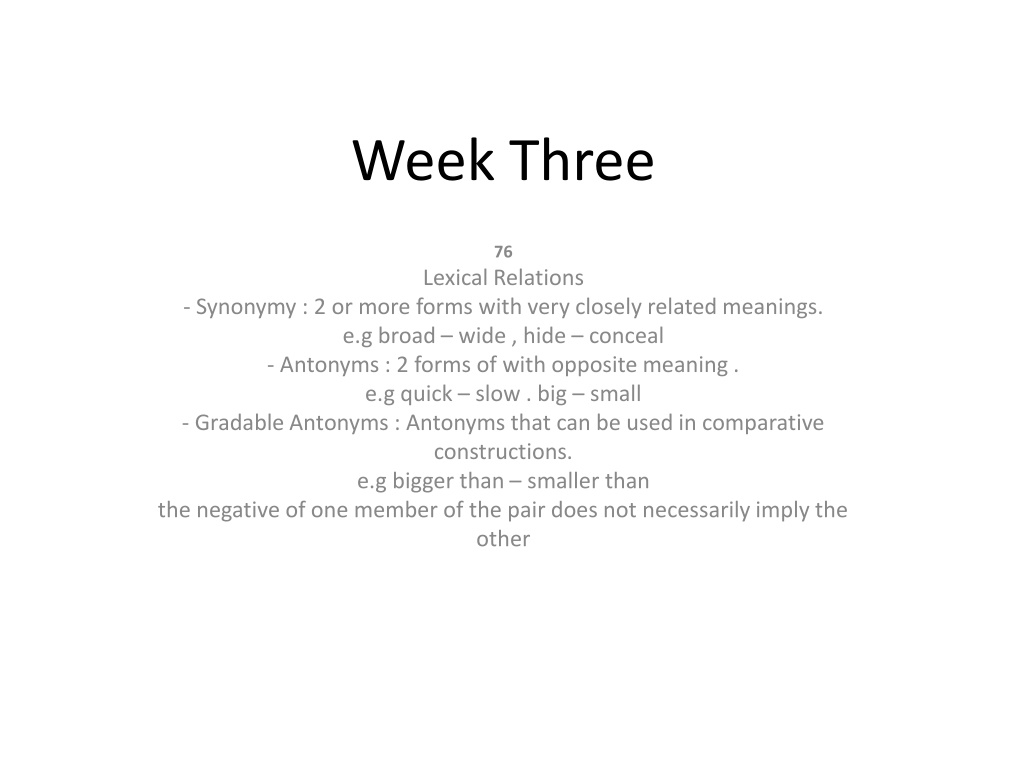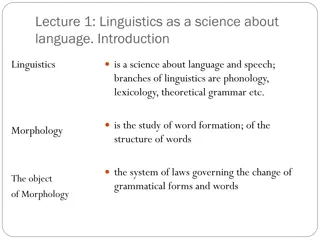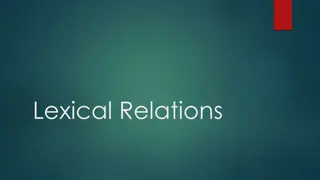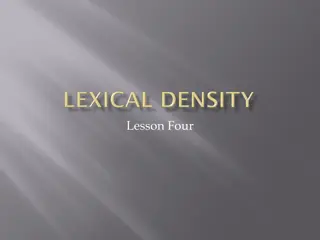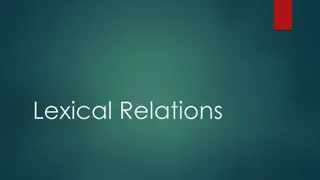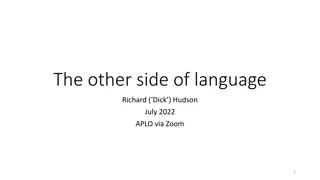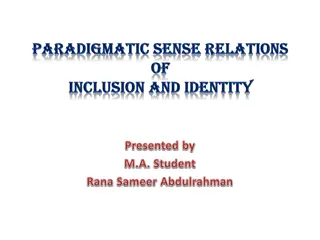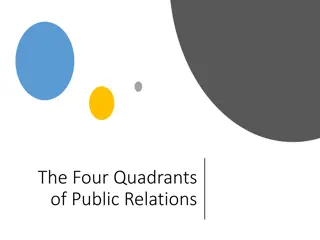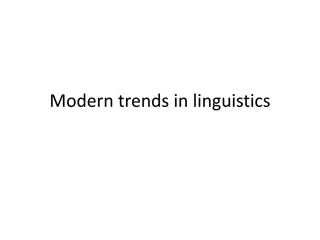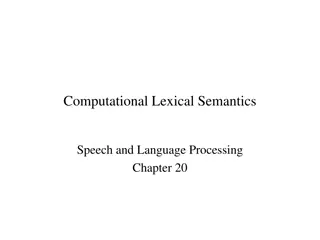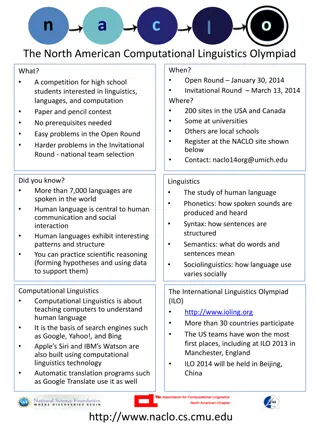Understanding Lexical Relations in Linguistics
Different types of lexical relations such as synonymy, antonyms, hyponymy, homophony, and homonymy play a crucial role in understanding the nuances of language. Synonyms have closely related meanings, antonyms have opposite meanings, while hyponymy and hypernymy show hierarchical relationships between words. Homophones have the same pronunciation but different meanings, and homonyms have multiple unrelated meanings. Recognizing and understanding these lexical relations enhances language comprehension and usage.
Download Presentation

Please find below an Image/Link to download the presentation.
The content on the website is provided AS IS for your information and personal use only. It may not be sold, licensed, or shared on other websites without obtaining consent from the author. Download presentation by click this link. If you encounter any issues during the download, it is possible that the publisher has removed the file from their server.
E N D
Presentation Transcript
Week Three 76 Lexical Relations - Synonymy : 2 or more forms with very closely related meanings. e.g broad wide , hide conceal - Antonyms : 2 forms of with opposite meaning . e.g quick slow . big small - Gradable Antonyms : Antonyms that can be used in comparative constructions. e.g bigger than smaller than the negative of one member of the pair does not necessarily imply the other
e.g. That dog is not old. (It does not have to mean that dog is young ) . - Non Gradable Antonyms ( Complementary Pairs ) : Comparative constructions are not normally used, and the negative of one member does imply the other. e.g. deader / more dead => not possible e.g. that person is not dead : that person is alive. Reversies They do the opposite of the other action. e.g. tie untie , enter exit
Hyponymy When the meaning of one form is included in the meaning of another, the relationship is described as hyponymy. e. g . rose flower , carrot vegetable rose is a hyponymy of flower - carrot is a hyponymy of vegetable Co Hyponymy / Super ordinate Animal ( super ordinate ) => horse / dog / bird Horse, dog , bird => co- hyponymys of animal Prototypes A prototype is the best example of a category
Homophony When two or more different written forms have the same pronounciation they are described as homophones. e.g bear bare , meet meat, write - right Homonymy We use the term homonymy when one form (written or spoken) has two or more unrealted meanings. e.g bank ( bank of a river ) , (bank financial institution )
